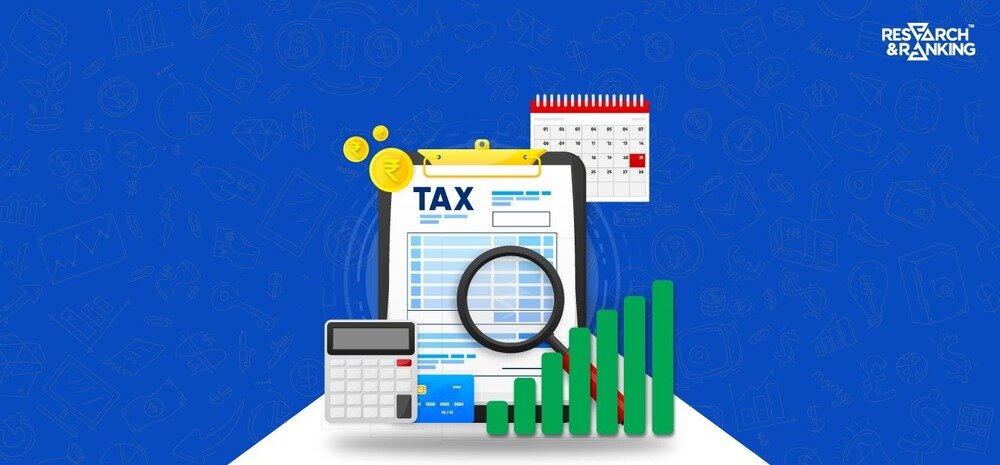Introduction
Were you sad when you saw your portfolio was all red? Or held the stock exchanges responsible for your losses? Don’t be concerned. Gain and loss are inherent in this game, but what separates champions from others is the ability to turn losses into gains. Tax Loss Harvesting is a strategy where you capitalize on your stock market losses to save on taxes.
In this post, you will discover everything there is to know about Tax Loss Harvesting, from what it is to the best tactics to use to maximize your tax savings. You will additionally learn how to use this fantastic strategy to increase your long-term benefits. So, let us begin!
Tax Rules for Stock Market Transactions
When you embark on a journey, you prepare to pack your clothes, bring vital medications, etc. Similarly, before we go on our adventure to learn about Tax Loss Harvesting, it is important to grasp the tax regulations that regulate stock market investing.
Potentially, there are two types of taxes in stock markets-
1. Short-Term Capital Gains Tax (STCG)
STCG is the tax on the gains realized by selling stocks or equities mutual funds within one year after purchasing them. In such cases, you must pay 15% of the gain tax.
2. Long-Term Capital Gains (LTCG)
LTCG is levied on gains realized when selling stocks or equities mutual funds held for more than a year. In these cases, you must pay tax on your gains at a rate of 10%. The only relief here is that you must pay LTCG taxes only if your gains exceed Rs. 1 Lac in a financial year.
Real-Life Example to Understand Taxes
To simplify it, let us consider a case where you bought 100 shares of ABC Ltd. at Rs. 500 per share on 1st January 2022. You sold 50 shares on 30th June 2022 at Rs. 600 per share and the remaining 50 shares on 31st December 2022 at Rs. 700 per share. How will you calculate your STCG and LTCG for the financial year 2022-23?
In this case, the first transaction of selling 50 shares on 30th June 2022 is an STCG, as the holding period is less than 12 months (6 months). The second transaction of selling 50 shares on 31st December 2022 is an LTCG, as the holding period is over 12 months (12 months).
In this case, your STCG is: STCG = (600 – 500) x 50 x 0.15 = Rs. 750
In this case, your LTCG is: LTCG = (700 – 500) x 50 x 0.1 LTCG = Rs. 1000
(Though LTCG is only payable if your gains exceed Rs. 1 lac, we have not taken this into account here to simplify the computations.)
Therefore, your total capital gain for the financial year 2022-23 is:
Total capital gain = STCG + LTCG
Total capital gain = Rs. 750 + Rs. 1000
Total capital gain = Rs. 1750
Tax Loss Harvesting- Way to Reduce Your Tax Burden
We’ve all bought some stocks we’re not proud of, either because we followed bad advice or because we bought at the wrong moment when valuations were sky-high.
The performance of these dud stocks hurts the performance of your portfolio. So, the ideal strategy is to post losses on these floundering stocks and offset them against capital gains from good stocks. This is the essence of Tax Harvesting.
Tax loss harvesting is selling some investments at a loss to offset the gains from other investments. By doing so, investors can lower their taxable income and pay less tax on their capital gains. It can be especially useful for investors with short-term capital gains, which are taxed more than long-term ones.
Say you invested Rs. 2 lacs in the stock market in Jan 2022. This comprises Rs. 1 lac invested in shares of Company A and Rs. 1 lacs invested in shares of Company B. You decide to sell these stocks in September 2023.
In the current scenario, company A shares are valued at Rs. 2.5 lacs and shares of Company B are valued at Rs. 25,000/-.
Now, see how tax loss harvesting works-
- You can sell the shares of Company B at Rs. 25,000, which will result in a long-term capital loss of Rs. 75,000 (since you held them for more than 12 months).
- Then, you can use this loss to offset the long-term capital gain of Rs. 1.5 lacs (Rs. 2.5 Lacs – Rs. 1 Lacs) that you invested in the shares of Company A, which will reduce your taxable gain to Rs. 75,000 (Rs. 1.5 Lacs – Rs. 75,000 = Rs. 75,000/-).
- You can save tax on the long-term capital gain at 10%, which amounts to Rs. 7,500 (Earlier Taxable Gain was 15,000/-)
Don’t fret if you haven’t offset your capital losses against your earnings this year. The best side of tax harvesting is that losses can be carried forward for up to eight assessment years.

Build your well-diversified portfolio
Create wealth now!
Build your well-diversified portfolio
Create wealth now!
Benefits of Tax Loss Harvesting
- Helps you reduce your tax liability and enhance your post-tax returns.
- Helps you diversify your portfolio, as the proceeds from the sale can be used to buy different securities that suit their risk and return objectives.
- Tax loss harvesting can also create new investing opportunities, as you can buy back the same or similar securities at a lower price after a certain period and benefit from their future appreciation.
- Tax loss harvesting can also enhance the compounding effect of investing, as investors can reinvest the tax savings to generate more returns over time.
Limitations of Tax Loss Harvesting
- Tax loss harvesting may involve transaction costs and market risks that can reduce or eliminate the tax benefits. For example, selling a security at a loss may incur brokerage fees, commissions, or spreads that can affect the tax savings.
- Tax loss harvesting may increase the investor’s taxable income if they sell the replacement security at a higher price. This is because the replacement security will have a lower cost basis than the original security and, thus, a higher capital gain when sold.
How Tax Loss Harvesting Can Be Helpful in Long-Term Investing?
Tax loss harvesting is a strategy that can be helpful in long-term investing, as it can help investors reduce their tax liability and increase their after-tax returns. It involves selling securities that have declined in value to offset the taxes on capital gains or income.
By doing this, investors can lower their taxable income and pay less tax in the current year. However, tax loss harvesting does not eliminate the capital gain or loss but only defers it to the future.
Therefore, investors can use the tax savings from tax loss harvesting to reinvest in the market and generate more returns over time. This can enhance the compounding effect of investing, as investors can grow their wealth faster by reinvesting the tax savings.
Moreover, tax loss harvesting can also help investors diversify their portfolios, as they can use the proceeds from the sale to buy different securities that suit their risk appetite and return objectives.
This can improve their portfolio performance and reduce their volatility in the long run. Therefore, tax loss harvesting can be useful for long-term investors who want to optimize their tax efficiency and maximize their wealth creation.
Key Takeaways
Tax loss harvesting should enhance long-term investing, not as a way to time the market or chase short-term returns. While putting this technique to practical implication, have a clear investment plan and objective.
However, tax loss harvesting may be ineffective for investors with low tax brackets or no capital gains to offset. Tax savings in such instances may be minimal or inadequate.
But, you can use Tax Harvesting to effectively rebalance your portfolio and maintain their desired asset allocation. Doing so allows you to take advantage of market fluctuations, cut down your tax bill, and reinvest your tax savings to earn good returns over time.
Related investing topics
FAQs:
How often should I do tax loss harvesting?
There is no fixed rule on how often you should do tax loss harvesting. It is advisable to periodically monitor your portfolio, such as quarterly or annually, and look for opportunities to harvest losses when they arise.
Is Tax Loss Harvesting risk-free?
No, it’s not so. Some of the risks involved are:
● You may lose the opportunity to benefit from the recovery of the security that you sold at a loss if it rebounds in price before you can buy it back.
● You may incur higher taxes in the future if you sell the repurchased security/stock at a higher price than the original security.
● You may incur transaction costs and market risks that can reduce or eliminate the tax benefits of tax loss harvesting.
Can I do tax loss harvesting in any type of account?
No, you cannot harvest tax loss in any account. Tax loss harvesting only applies to taxable accounts, where you must pay capital gains or income taxes. Tax loss harvesting is not relevant for tax-deferred or tax-exempt accounts like PPF or NSC, where you do not have to pay taxes on capital gains or income until withdrawal or never.
Read more: How Long-term investing helps create life-changing wealth – TOI.
How useful was this post?
Click on a star to rate it!
Average rating 4.2 / 5. Vote count: 16
No votes so far! Be the first to rate this post.
I’m Archana R. Chettiar, an experienced content creator with
an affinity for writing on personal finance and other financial content. I
love to write on equity investing, retirement, managing money, and more.
-
Archana Chettiarhttps://www.equentis.com/blog/author/archana/
-
Archana Chettiarhttps://www.equentis.com/blog/author/archana/
-
Archana Chettiarhttps://www.equentis.com/blog/author/archana/
-
Archana Chettiarhttps://www.equentis.com/blog/author/archana/

